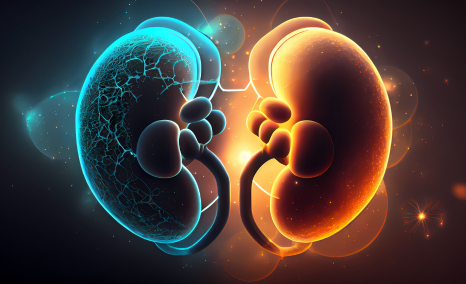
Advancements in Complement 3 Glomerulopathy (C3G) Treatment: Exploring Upcoming Anti-Complements

Apr 17, 2025
Nov 09, 2020
Rare renal disorders are the fifth most prominent reason behind the cause of end-stage kidney disease (ESKD), ultimately leading to kidney failure, and damage to other tissues. Among such rare kidney diseases, one is complement 3 glomerulopathy (C3G). Albeit rare, the total diagnosed C3G prevalent population in the 7MM (the US, EU5, and Japan) was estimated to be 8,175 in 2017, estimated DelveInsight. The condition is known to affect people of all ages; however, C3G disproportionately affects children and young adults.
Complement 3 glomerulopathy is a rare, chronic renal disease. The primary reason behind the condition is the change in the filtering mechanism of the kidneys that are disrupted due to the massive accumulation of C3 proteins and other elements required for building immunity. The clinical course of C3G is more indolent. Subtypes of C3G demonstrate the diversity of pathologic findings and the variability of clinical course. While there is a lack of pathological clarification for C3G, over the past few years, it has been validated that there exist at least two identifiable types: Dense Deposit Disease (DDD) and C3 Glomerulonephritis (C3GN). The former one is characterized by C3 deposits clubbed in one area of the glomeruli while in the case of the latter deposits are more spread out. Several secondary sources suggest that C3GN has a higher prevalence than DDD.
It results in slow, progressive damage to the kidneys that by the time the condition is diagnosed, half of all the patients have kidney failure. Approximately 30-50% of people with C3G progress to kidney failure within ten years of diagnosis. To crown it all, C3G often gets mislabelled as other kidney diseases such as post-infectious glomerulonephritis (PIGN). Even if the condition gets properly diagnosed with the help of renal biopsy with specialized immunofluorescence and electron microscopy, the complement 3 glomerulopathy market offers no FDA-approved therapy.
Article in PDF
All patients diagnosed with C3G opt for reno-protective measures, including lifestyle advice, an angiotensin-converting enzyme inhibitor or angiotensin-receptor blocker (to regulate hypertension and proteinuria), and lipid-lowering treatment. As already stated, there are no C3G-specific medications available; the C3G market is majorly dominated by the use of off-label prescription drugs. C3G treatment market includes immunosuppressants, steroids, renin-angiotensin-aldosterone system inhibitors (RAAS), and other supportive therapies, including antibody regimens such as Eculizumab and Rituximab. The central role of complement dysregulation in the pathogenesis of C3G has focused attention on anti-complement agents as potential treatments. Such medication alone fails to protect against progression to end-stage renal disease but may improve the protective effect of immunosuppressive medication.
Plasma therapy has limited efficacy. It may benefit patients with C3G who have AKI but have been unsuccessful in patients with C3 nephritic factors, presumably owing to the production of these autoantibodies continues after they are removed. Similarly, immunosuppressive therapy has shown mixed efficiency. Almost half of the patients undergo kidney transplantation; however, C3G often recurs after kidney transplantation, histologically in 67–90% and clinically in 50–60% of patients.
Unfortunately, no treatment is universally effective or curative. However, therapeutic advances in the C3G market have been made in recent years, albeit subdued. Clinical trials are underway to investigate the efficacy of several first-generation drugs that target the alternative complement pathway.
Several pharma companies are dedicatedly discovering and advancing several small molecules to different stages of clinical development that may prove to be a game-changer in the treatment of immune-related diseases associated with the alternative pathway of the complement system.
The current emerging C3G market possesses an intermediate pipeline. The expected launch of potential therapies, Danicopan (Alexion Pharmaceuticals), Narsoplimab (Omeros Corporation), Pegcetacoplan (Apellis Pharmaceuticals), ChemoCentryx (Avacopan; Phase II), and LNP023 (Novartis Pharmaceuticals) during the forecast period of 2020-2030 shall propel the complement 3 glomerulopathy market size in the 7MM, found to be USD 40.6 Million in 2017, estimated DelveInsight. Furthermore, the largest C3G market size was found in the United States, and the least share was in Spain across the 7MM.
Alexion is developing Danicopan (ACH-4471/ ALXN2040), an investigational, oral, factor D inhibitor to treat rare diseases associated with the complement alternative pathway. The company is moving towards completing phase II C3G studies and plans to target global regulatory discussions in 2020 itself. With proven efficiency and demonstrated proof-of-concept and proof-of mechanism in PNH and C3G, respectively, danicopan (ACH4471) offers a significant opportunity for Factor D inhibition in the treatment of other diseases as well.
At the same time, Omeros is busy with its Narsoplimab. Narsoplimab is a human monoclonal antibody that targets mannan-binding lectin-associated serine protease-2 (MASP-2), the effector enzyme of the lectin pathway of the complement system. The drug is in phase II trial of development for C3G. Omeros plans to commercialize OMS721 for one or more therapeutic indications as a subcutaneous injection. Novartis is also in the race with its candidate LNP023. It is an oral small-molecule inhibitor of complement factor B (FB) with potential immunomodulatory activity. The drug is in the phase II stage of clinical development for C3G. The company is planning to file the drug in 2023 so that it can enter the complement 3 glomerulopathy market in the near future, thereby meeting the demands of the patients.
There are a few early-stage key players, namely, Amyndas Pharmaceuticals (AMY-101; Phase I) and Visterra Inc. (Preclinical Stage) that are investigating their drug candidates for the treatment of patients with C3G as well. An anticipated increase in the diagnosed C3G prevalent population along with an increase in awareness of the renal diseases shall further accelerate the C3G market size growth.
Several initiatives have been taken to revolutionize the C3G treatment landscape to encourage the development of therapies and research. Several international and patient organizations are proactively taking the front seat to advance the treatment for renal disease. Coupled with technological advances, several enhancements have been made to better understand the clinical and genetic issues with C3G. Even so, a lot needs to traverse until an approved therapy embraces the C3G market.
Article in PDF


Apr 17, 2025
